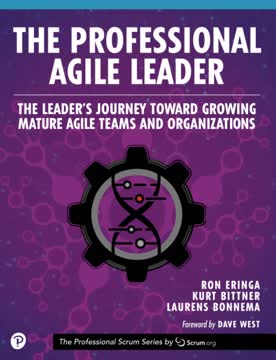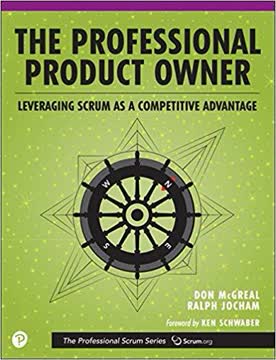Key Takeaways
1. Agility is a necessity, not an option, driven by complex challenges.
Leaders are formed in crucibles of extreme change for which one is never fully prepared.
Embrace the unknown. Organizations, even successful ones, face unrelenting change that threatens their existence. Past success often breeds complacency, making it difficult to adapt when new challenges arise. Agile change, by its very nature, is sweeping and disruptive, demanding a plunge into the unknown rather than adherence to old, comfortable methods.
Dependencies hinder change. Traditional organizations are often so intertwined that even small changes create a domino effect of disruptions. Managing this complexity with more planning only exposes dependencies, slowing the pace of change to a crawl. The most effective way to accelerate change is to eliminate these dependencies, often through stable, defined interfaces between products or organizational parts, allowing different teams to move at their own pace.
Start small, learn fast. Not everyone needs to change at once. Foresighted leaders should identify pockets within the organization that must work differently to succeed. By focusing on these smaller innovation cells, like Doreen's acquisition of Energy Bridge, an organization can slowly shift its balance towards broader necessary changes, learning quickly through rapid experimentation and feedback loops, rather than trying to change everything simultaneously.
2. True agility starts with empowering self-managing, customer-focused teams.
Getting the right people and the right chemistry is more important than getting the right idea.
Build from scratch. Broad adoption of agile techniques often fails because it lacks a strong foundation. The fundamental building block of an agile organization is the empowered, self-managing team. Instead of trying to change existing, entrenched teams, the best approach is to form new teams from volunteers who are eager to work differently, allowing them to self-select their members and establish new working relationships.
Purpose drives motivation. Teams need a powerful, motivating mission to truly coalesce. This "why" should be expressed in terms of helping customers achieve desired outcomes, focusing on closing "satisfaction gaps" between current and desired customer experiences. This customer-centric approach provides intrinsic motivation, allowing teams to devise innovative solutions rather than passively following predefined plans.
Leaders set boundaries. While teams self-select and self-manage, leaders play a critical role in establishing overall goals and boundary conditions. They nudge when necessary, ensuring diversity in skills and perspectives, but do not dictate final decisions. This balance of empowerment and guidance helps teams build confidence in their abilities while remaining aligned with the organization's strategic objectives.
3. Shift from measuring outputs and activities to customer outcomes and impact.
What gets measured gets done.
Measure what matters. Traditional organizations often measure activities (e.g., hours worked) and outputs (e.g., features delivered), which are easy to count but provide little insight into actual value. This leads to a false sense of security, as plans might be followed perfectly, yet fail to achieve desired results. The shift to agility demands measuring customer outcomes – the desirable changes in customer experience – which are harder to quantify but directly reflect business success.
Goals drive direction. High-performing teams don't need detailed plans; they need clear, outcome-based goals. These goals should be tiered: strategic (aspirational, long-term), intermediate (milestones towards strategic), and immediate tactical (short-term objectives). This structure allows teams to make their own decisions on how to achieve goals, while leaders inspect progress frequently and adapt based on new information, even if it means changing the goals themselves.
Transparency fuels adaptation. Lack of transparency, often driven by a fear of "looking bad," undermines an organization's ability to make informed decisions. Filtering information or presenting only positive updates prevents leaders from understanding real challenges and adapting strategies. True transparency, where "bad news" is simply "news" that provides learning opportunities, is essential for continuous improvement and for executives to engage directly with teams to understand the business firsthand.
4. Leaders must learn to "let go" of control and foster trust and transparency.
Everyone loves agility until it starts to undermine their own perceived authority.
Empowerment is threatening. Agile transformation is deeply threatening to traditional hierarchies because it shifts decision-making authority from managers to teams. This often manifests as concerns about quality or consistency, but at its core, it's a fear of losing control, status, and influence. Senior leaders must actively support and protect nascent agile teams from this pushback, demonstrating that relinquishing control leads to a different, more powerful form of influence.
Visible vs. Invisible. Most organizations focus on the "visible" aspects of change: processes, tools, and structures. However, the true drivers of behavior lie in the "invisible" domain: values, beliefs, fears, and aspirations. Leaders must balance their focus, addressing both the explicit (e.g., clear goals, communication) and implicit (e.g., psychological safety, ownership, awareness) aspects to create lasting cultural change and foster genuine engagement.
Delegation is a journey. Leaders don't just "give away" power; they delegate it incrementally based on a team's maturity and the decision's impact. This ranges from "tell" (lowest trust) to "delegate" (highest trust). By allowing teams to make minor decisions, monitoring results, and coaching them to improve, leaders gradually expand autonomy. This process helps teams develop decision-making capabilities and frees leaders to focus on strategic goal-setting rather than micromanagement.
5. Agile transformation requires a shift from traditional to 'catalytic' leadership.
The new breakthroughs and challenges of this complex digital age are inherently creating some challenges that require us to build organizations that can tap into the collective knowledge of our people, so we can come up with smarter decisions faster.
Old styles hinder progress. Traditional leadership styles—combative (fighting for power), compliant (preserving status quo), and competitive (individualistic achievement)—are ill-suited for the complex, rapidly changing digital age. These styles stifle collaboration, resist change, and prioritize individual success over collective intelligence, ultimately trapping organizations in perpetual crises or stagnation.
Catalytic leadership empowers. The "catalytic" leadership style is essential for true agility. It focuses on helping others develop their own leadership abilities, viewing leadership as an activity rather than a personal power. Catalytic leaders remove barriers, foster growth, and make it easier for people to collaborate and achieve goals that no individual could accomplish alone, tapping into the collective knowledge of multidisciplinary teams.
Trust bottom-up intelligence. In times of crisis, the people closest to the work—the teams—often possess the most accurate information and the best solutions. Catalytic leaders trust this "bottom-up intelligence" over top-down directives, even if it means bypassing traditional approval chains. This trust, demonstrated through action, empowers teams to make timely decisions and reinforces their accountability for customer success, proving that collective brainpower surpasses individual authority.
6. Leadership is an activity for everyone; specialists become coaches and mentors.
Leadership is an activity, not a role, and the role of leaders is to help other leaders to grow.
Silos impede flow. Traditional organizations, structured around specialized skill silos (e.g., engineering, marketing), inherently create dependencies and slow down work. This discourages cross-functional skill development and leads to fragmented accountability. To achieve enterprise agility, these silos must be broken down, allowing teams to own the entire value stream from idea to customer experience.
Specialists as enablers. In an agile organization, specialists (e.g., security, legal) shift from being "doers" to becoming teachers, coaches, and mentors. Instead of teams waiting for specialists, specialists are available on demand to support teams, helping them acquire necessary skills or providing expertise for infrequent needs. This ensures teams remain self-sufficient while still accessing deep knowledge, optimizing for team flow over individual utilization.
Continuous learning culture. Agile organizations foster a culture of continuous, lifelong learning. Leaders must provide an infrastructure that facilitates skill development, moving beyond basic training to higher-level learning methods that encourage application, analysis, and creation. This focus on intellectual capital and professional growth, often through peer coaching and 360-degree feedback, attracts and retains talent, ensuring teams can adapt to evolving challenges.
7. Sustained agility demands dismantling old organizational silos and reward systems.
No organization can maintain this dual operating model forever.
Dual models are temporary. While a "dual operating model" (agile cells alongside traditional structures) can initiate change, it's unsustainable long-term. The two models are fundamentally incompatible, creating conflicting values, turf battles, and resentment. Eventually, the organization must fully commit to agility, gradually dismantling the old hierarchy and transferring responsibilities and authority to self-managing teams.
Manage attrition proactively. As responsibilities shift, traditional managers and employees may feel their roles are being "hollowed out." Some will resist the change and eventually leave, like Carl. Leaders must be direct and clear about the organizational shift, managing this attrition respectfully. Those who cannot or will not adapt to the new catalytic leadership style, or embrace team-centric work, must be helped to find opportunities elsewhere.
Realign rewards and careers. To solidify the agile culture, compensation and career paths must be realigned. Shift from individual performance bonuses to team-based rewards that reflect customer outcomes. Career progression moves from hierarchical promotions to recognizing individuals for their ability to grow others through coaching and mentoring, fostering a culture where influence is gained by enabling team success, not by controlling resources.
8. Cultural change is the ultimate, continuous journey, built on psychological safety and learning from mistakes.
Leaders are best when people barely know they exist. When their work is done, their aim fulfilled, the people will say, “We did it ourselves.”
Culture is the hardest. An organization's culture, "the way we do things around here," is deeply ingrained and resistant to change. It emerges from shared attitudes, values, and goals, and attempts to change it directly often fail. Most agile transformations falter because they don't fundamentally shift the underlying culture, leading to superficial adoption that reverts once external pressure subsides.
Radical transparency builds trust. Catalytic leaders cultivate psychological safety by embracing radical transparency. For them, "bad news" doesn't exist; all information is valuable for learning and improvement. They frame decisions as experiments, encouraging teams to openly share results, even failures, without fear of blame. This fosters a culture where mistakes are seen as learning opportunities, accelerating adaptation and innovation.
Agility is a continuous journey. The "agile transformation" is not a destination but a continuous journey of learning and adaptation. Success is achieved when the new way of working becomes self-perpetuating – "simply the way we do things around here." This requires ongoing effort, as the conditions that necessitated agility never truly disappear. Leaders must continually nurture teams, remove obstacles, and seek new opportunities, ensuring the organization remains adaptable and thrives in a complex, ever-changing world.
Last updated:
Review Summary
The Professional Agile Leader receives positive reviews, with a 4.35/5 rating on Goodreads. Readers praise its insights on agile transformation, leadership challenges, and organizational change. The book introduces new concepts like agile culture, key value areas, and leadership styles. It emphasizes self-managed teams and empiricism. Readers appreciate the mix of theory and real-life stories, making it accessible and informative. However, one reviewer found the alternating narrative style challenging. Overall, it's recommended for leaders and managers involved in agile transformations.
The Professional Scrum Series Series
Similar Books
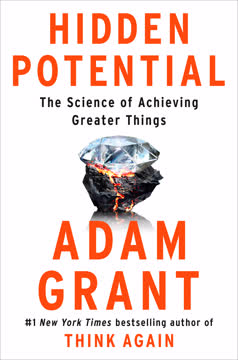


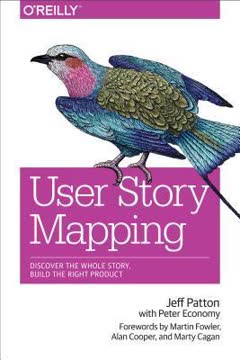

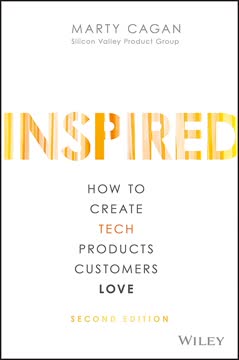


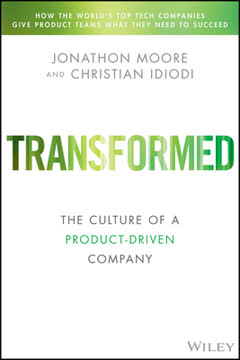

Download PDF
Download EPUB
.epub digital book format is ideal for reading ebooks on phones, tablets, and e-readers.
